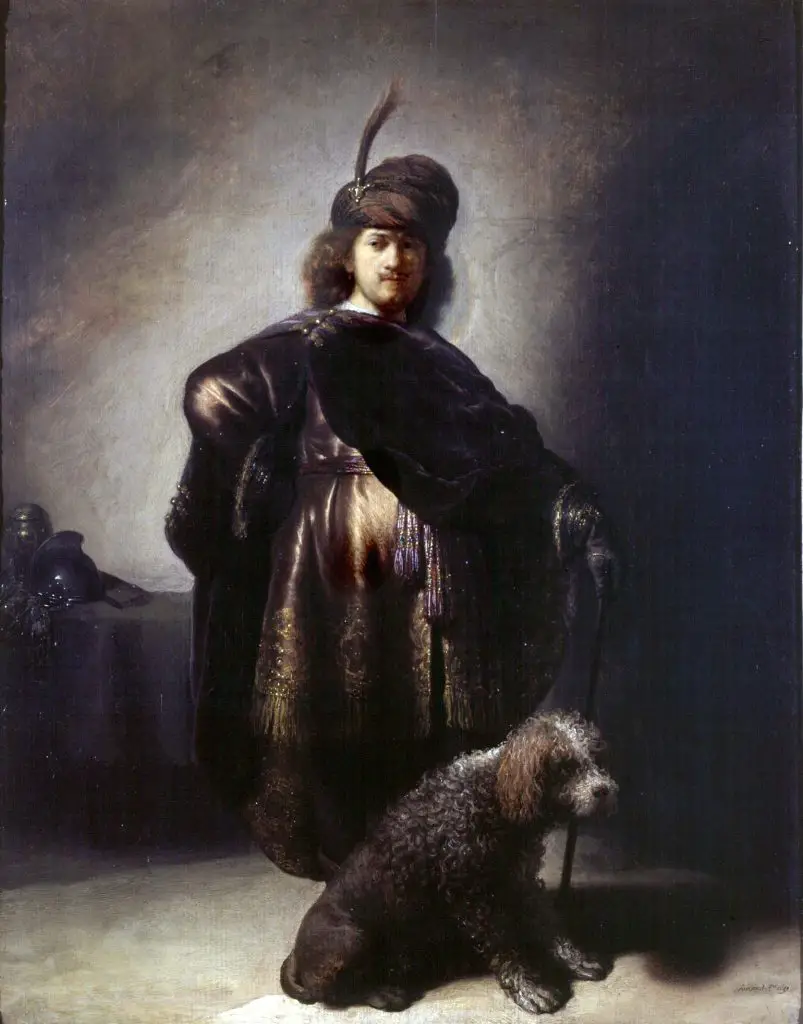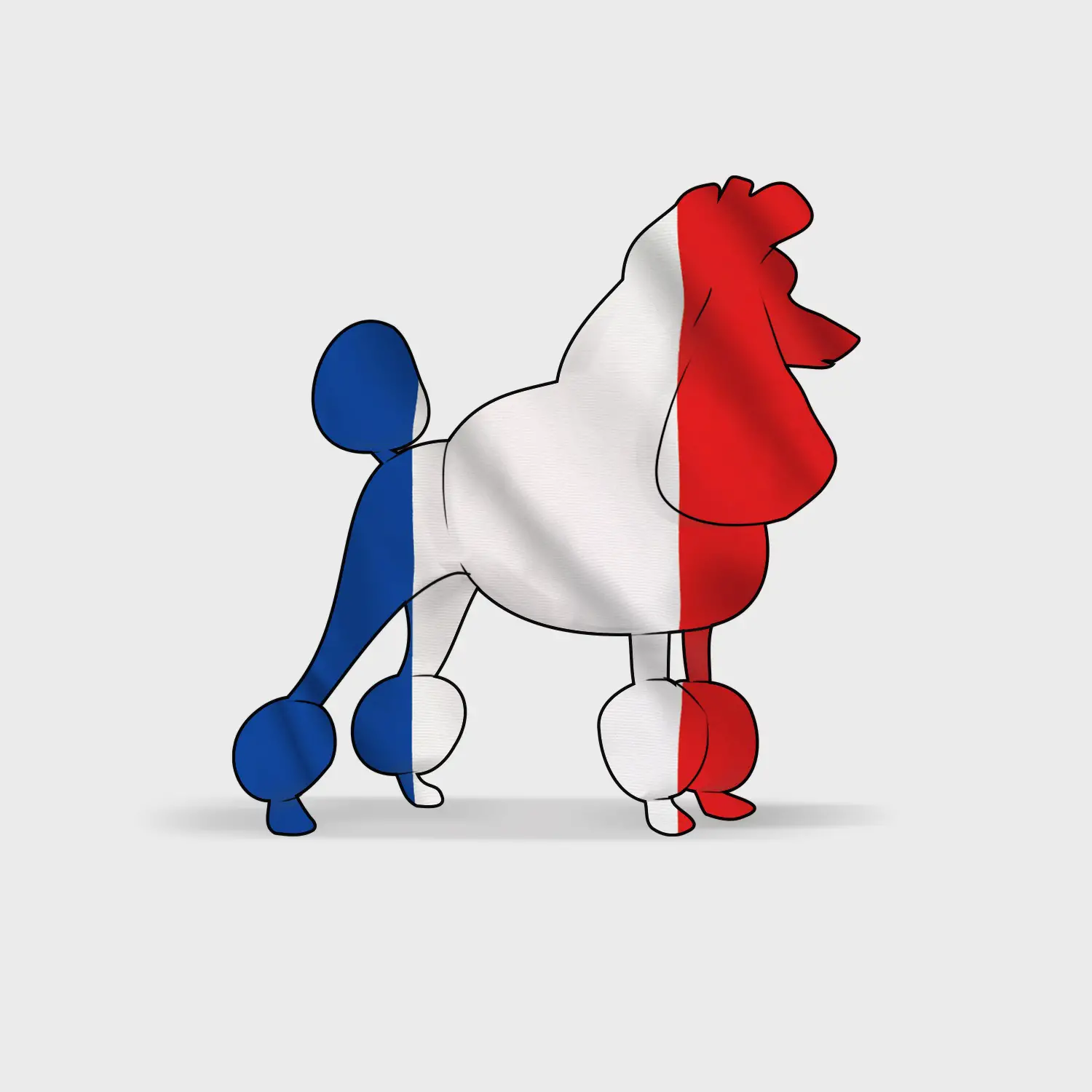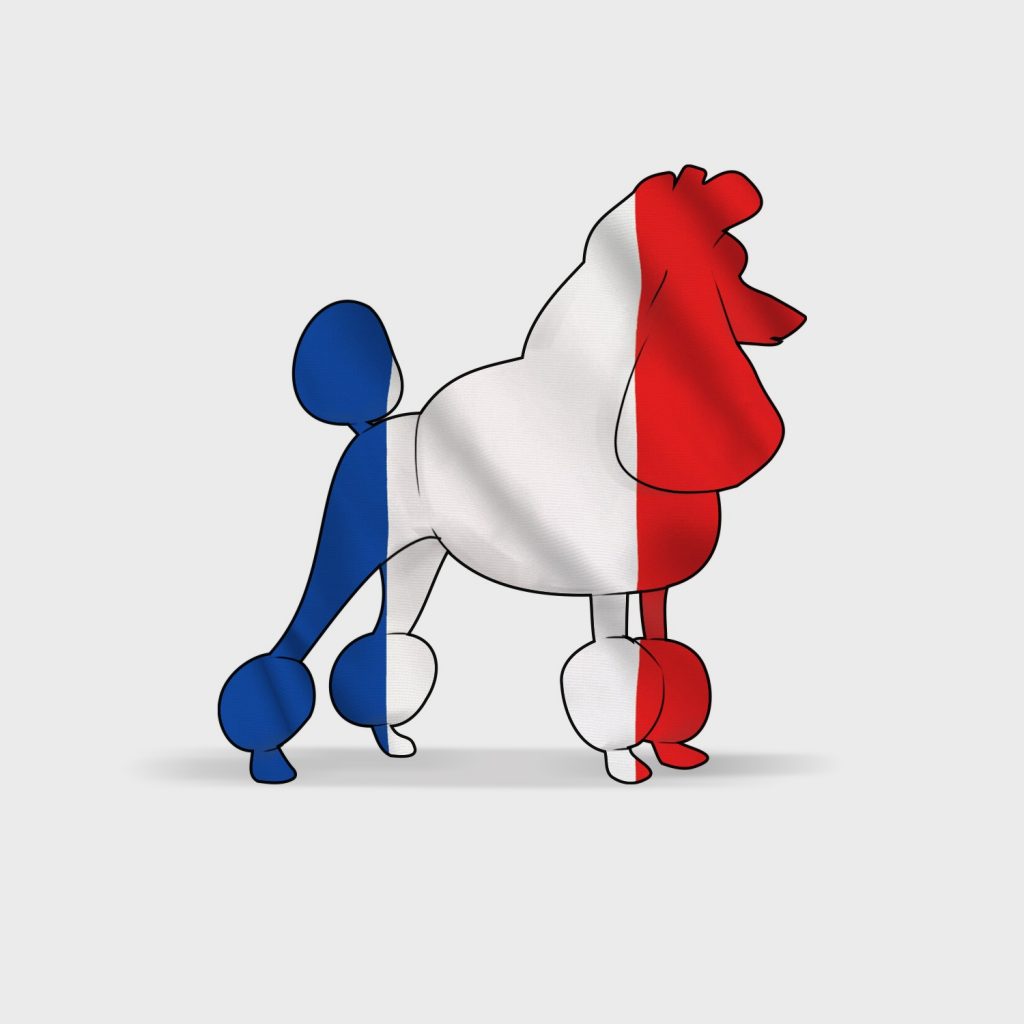Are Poodles French And Where Do They Originate From? Sneek-a-peek At Their Sensational History
So something often asked about poodles is, are they french… People often think poodles are french, probably because their style and grace have long been associated as something the French do well. However, what I’m about to share will not only explain why this is wrong but also where poodles actually come from…
So, are poodles French?
No, poodles are not French. They originate in Germany. However, they became very popular in France in the 15th century and became standardized there. Poodles are the national dog of France.
Why is it called French poodle then?
While originally from Germany, the poodle as we know it was standardized in France and became very popular, both as a pet and water retrieving dog. It was such a popular breed that it became France’s national dog breed. In French a poodle is called a “Caniche” which roughly translates to “duck dogs”, as they were used for hunting ducks.
Poodles were very popular with French royalty, before the French Revolution. Louis XV was known to be very fond of poodles and in the 17th century, King Louis XVI and his wife Marie Anntionette were known for keeping toy poodles at their palace in Versailles (before they were beheaded). King Louis XVI’s favourite poodle was one called Filou which means trickster in the French- I imagine he was one pampered poodle!
During this time the poodle became the official dog of France, made popular due to their fabulous coats which were styled elaborate and fashionably in French courts- where appearance was very important.
It is thought that in the 17th and 18th-century poodles began to be bred to be smaller, like the toy and miniature poodles we see today. This may be because smaller poodles are easier to carry around like a trophy and there are even some reports of poodles being used as “sleeve dogs”, where they were carried up people’s sleeves to keep hands warm!
The poodle coats of French courts often mirrored whatever was popular and fashionable with their owners at the time. This period in history was known for its elaborate and over the top fashions, made to show off just how wealthy the person was. Some poodles had high pompadours and even mustaches- similar to their courtly owners! Poodles were also dyed different colors and some had family coats of arms shaved into their fur. These poodles were paraded around as the perfect fashion accessory for the celebrities of the time.
These dogs were so popular that they led to the emergence of a whole new profession for some savvy entrepreneurs- dog grooming! In the 18th century, a work of art by J Chalon shows women grooming poodles in the street using shears and clippers, showing some similar styles to what we see in dog show rings now. These first “dog groomers” played with more and more elaborate styles and really contributed to creating the iconic poodle hairdo that they are known for today.
After the French Revolution, the poodle remained popular, not only because of their fashionable looks, but also because poodles are great performers. Poodles worked in the travelling circus, one of the few forms of entertainment available to the masses before television or the internet. Poodles were clipped to match the pom poms on clown’s outfits. This no doubt meant that poodles remained in the public’s mind when thinking of what kind of dog would be perfect pets.
Poodles remained popular in France and were very common among French celebrities in the 20th century still, however, some experts are worried that poodles are now much less common and popular in France.
Where do poodles come from?
Poodles, like all dogs, have common ancestors- wolves and wild dogs. Poodles, as we know them, first emerged as a breed long after the first dogs had been domesticated, around 500 years ago in Germany.
There are some depictions of poodle-like dogs in ancient Egyptian and Roman drawings. However, It is thought by dog genealogists that poodles originated in Germany in the medieval times. The name poodle is thought to come from the German word “pudelin” or “pudelhund” meaning “puddle” or “splashing in the water”. This name comes from what poodles were originally bred for- water retrieving and hunting.
Not only are poodles very intelligent and perfect for this work, but their tightly curled coats also offered them some extra warmth and water resistance when swimming in the cold water to fetch ducks and other waterfowl.
There are German paintings of poodles dated back to the 15th century, by German artist Albrecht Dürer. The world-famous and very influential artist Rembrandt also featured his pet poodle in a self-portrait- showing for sure that if you have an artistic or creative nature that poodles make the perfect muse…

Rembrandt and his pet poodle
These paintings, along with the poodle’s links with french royalty, all show poodles with the upper classes of society. It seems that poodles were mostly the preserve of the wealthy, as having a dog as a fashion accessory or hunting dog, would have been an expense most peasants could not have afforded. While poodles do make good working dogs due to their intelligence and trainability, the prestige associated with them meant that during this period they did not enter the mainstream as a farm or working dog. This may indeed be part of the reason why some people have the impression that poodles are snobby dogs with a stuck up personality, which if you own a poodle, you will know is not the case at all.
Poodles quickly spread throughout the world after this, to England, Spain, and eventually North America.


